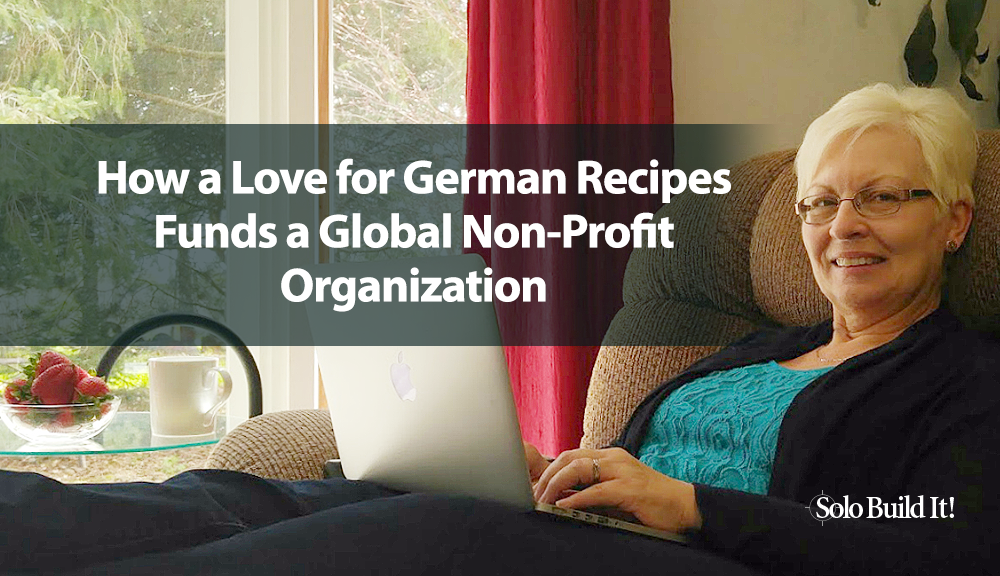
My lightbulb moment came when I changed my attitude from building a website to building a business.Gerhild from quick-german-recipes.com
When Gerhild Fulson started with Solo Build It! (SBI!), all she wanted was to learn how to build a website. She chose what she believed to be an “easy” niche and pretty much ignored the business-building advice in the SBI! Action Guide.
Only years later did she realize that her recipe website could be much more than a “training ground” for her and her husband’s real passion, to build a Christian resource website in German for their non-profit organization.
It could become the funding source for their organization!
To get there, Gerhild had to treat her recipe site as a real business. She had to fix what she’d done wrong when she started out.
Did she succeed? Read on to find out!
1. How did you decide about your niche, German recipes? How did you know it was the right topic for you and had great business potential?
When I started quick-german-recipes.com, my intention was to learn how to build a website. My husband and I had a passion to build a Christian resource website in German for our Gottes Wort (God’s Word) ministry.
However, since speaking and writing in German were a struggle for me, I knew that doing an English site would be easier. I could then apply my newly acquired knowledge to the German one.
I needed a really easy niche, one that wouldn’t take too much time to do. Since I loved to cook German foods, it seemed like a good fit. Because “easy” was important, I didn’t fully follow the Action Guide. That meant, I pretty well ignored the business potential part (DAY 4).
After all, I had already chosen my niche (even though its supply and demand numbers weren’t great) and I stubbornly wasn’t about to change it. I was more interested in the actual website building and learning all the techie stuff.
We advise SBI! members (SBIers) to research and evaluate at least 3 potential site concepts. You use SBI!’s advanced keyword brainstorming and analysis tool to do this (called “Brainstorm It!”). Based on your evaluations of keyword numbers and several other important factors, you choose the best possible niche for you.
Gerhild clearly went through these steps, as she talks about “supply” and “demand” numbers. Demand is a measure of how many people are interested in your topic. Supply tells you how competitive the niche is. The Action Guide helps you find your “Goldilocks niche,” a topic that’s neither too narrow nor too broad, and has good profit potential.
Numbers are only part of the story though. You may have good reasons to go with a sub-optimal niche, like Gerhild did. There’s nothing wrong with that, as long as you’re aware of the reduced business potential.
My purpose had been to learn how to build a website. That’s exactly what I did. A few months later, I started gottes-wort.com (now gotteswort.org). The ministry in Germany was taking a lot of our time and the recipe site was put on the back-burner, with the occasional new recipe added. I kept up the monthly newsletter and, surprisingly, the subscriber list kept growing into the thousands.
About three years ago, the lightbulb moment came when I changed my attitude from “building a website” to “building a business.” I realized that the recipe site could have had the potential to become a business, if I would have built it properly. I knew I had set it up wrong as far as monetization was concerned and, because of that, I struggled with making any real money from it.
Since hubby and I were retired, I committed to having the recipe site’s income fund the Gottes Wort ministry. That meant I needed to do something. I had two choices. Start over with a more monetizable site, or fix it. I chose to fix it, because it already had over 200 pages.
I started by going back through the Action Guide and making changes where I could:
- Looked into monetization streams and started implementing them.
- Searched keywords properly in Brainstorm It! and used my Master Keyword List (MKL) constantly.
- Fixed pages, making sure I used Analyze It!.
- Relied heavily on the “Tips and Techniques” articles and the SBI! forums.
- Added photos.
- Added better quality content.
- And, I’m continuing to learn…
Now, I get excited when I think of its business potential!
Having a business mindset is the key that sets you apart. It may sound small to you, but it impacts in important ways, from how you prioritize your limited time to planning a monetization mix that maximizes your income to fixing problems, like Gerhild did.
She went back over the Action Guide and fixed what she missed the first time. It’s so exciting to witness Gerhild’s evolution from wanting to learn “how to build a website” to a proud, business-focused solopreneur. Her “JustLikeOma” recipe business now funds her own non-profit organization (but we’re getting ahead of the story).

2. Tell us about your philosophy regarding content. How do you know what your prospective customers are looking for? Where does this information come from?
Since a recipe “site” doesn’t normally have a great business potential — I mean, people come looking for free recipes, not to buy a fridge — I knew I needed lots of traffic. As long as I do what the Action Guide says and provide quality and unique content, Google responds by sending people my way.
I use the statistics from SBI!, Statcounter, and Google Analytics to track down where my audience is. Since 75% is in the States, my Canadian English disappeared from my site and American English took over.
I’m also a great believer in using Facebook to drive traffic to my site. And, Facebook has fantastic statistics (“Facebook Insights”) available. There I see that 75% of my fans are women, so that affects the voice of my site. Further, by engaging with my audience on Facebook, I find out what they are interested in. Many call me Oma and ask for help in recreating their favorite dishes. That provides ideas for more content.
In fact, that’s when I started to brand my site, and my tagline, Just like Oma, became my new domain name which re-directs to my original domain name. My social media is all set up to match my new name.
I also follow other German and recipe pages on Facebook and see what trends and topics are current. These become focal points for my Facebook Page to increase engagement as well as to provide ideas for new content.
Listening to your audience’s needs and wishes gives you ideas for new content. It helps you develop products that they will happily buy from you.
Gerhild even rebranded her site’s domain name and tagline because of the feedback she received from her Facebook fans. She mentions another important factor to consider when choosing a domain name. She says: “My social media is all set up to match my new name.”
It used to be that a great domain name was all you needed. Today your brand needs to make it on social media, too.
Everyone knows the importance of grabbing a short, memorable, brandable domain name. Most don’t also check to see if it’s available as a username at all major social sites. See our short step-by-step guide on how to do this before picking a domain name.
SBI!’s Master Keyword List (MKL) is another great source of info. I finally realized I could use Brainstorm It! to look for new keywords by doing vertical and lateral searches on my Tier 2s and even Tier 3s.
The Brainstormer is the search tool. It has several options for conducting searches. The two most important options are:
- “Vertical Brainstorms”: these bring back keywords that have the search term in it. For example, a vertical brainstorm for “german recipes” could return “german salad recipes,” “best german recipes,” traditional german recipes,” etc. They all have the search term — “german recipes” — in them.
- “Lateral Brainstorms”: these brings back keywords that don’t contain your search term. To continue the above example, a lateral brainstorm for “german recipes” could return terms like “apple strudel,” “goulash soup” or “christmas baking.” These phrases are related to “german recipes,” but don’t contain the term.
The Master Keyword List shows your brainstorming results, but it does more than that. Within your MKL you have the ability to evalute your keyword results through sorts and advanced filters.It helps you find the most relevant and profitable topics (aka keywords) to write about.
You then organize all those topics into a 3-tier structure. Tier 1 is your site concept keyword (which becomes your home page). Each Tier 2 page is a subcategory of your Tier 1. Each Tier 3 page is a subtopic of a Tier 2 page.
This type of structure ensures that search engine spiders find and index your pages (display them in the search results). It also makes your site more appealing to your audience. A site that’s disorganized can be difficult to navigate, which turns off human visitors.
3. How many different revenue streams do you have? Which ones perform best?
At present, passive income is still performing best (AdSense and Swoop). My eBooks are next. Amazon and other affiliates provide the rest.
I had another lightbulb moment when one of my FB fans said she was looking forward to making my German cheesecake. She had purchased the Greek yogurt maker I had recommended (using my Amazon affiliate link) and could now make the required Quark. I hadn’t thought of myself as an influencer until that day. Now I’m using Hubba for my influencer/brand marketing.
My newest endeavor is adding a ‘real’ store to Just like Oma and finally getting around to writing that hard copy cookbook that people keep asking for.

Gerhild mentions two services that were new to us: Swoop and Hubba. We asked her to tell us a bit more about how they help her monetize and if she’d recommend them to fellow solopreneurs. Here’s what she explained:
Swoop is a contextual advertising platform, like Google AdSense, but only for certain industries (automotive, health, consumer packaged goods, food, and finance).
For me, Swoop brings in about ¼ of what AdSense does, and seems to follow along with the same ups and downs. (When AdSense income is up, so is Swoop.) They insert ad slots within content — unfortunately, only in the United States, so I really can’t see the ads in action here in Canada. They sent me a couple of screenshots to show how they appear on my site.
Only about ¼ of my pageviews show Swoop ads, so it seems to pick out times when the ads may convert best. Since I can’t see them on my site, I have a tendency to forget they are there. That is, until I get paid monthly. I’ve had them for almost a year, and so far no complaints from visitors that they find the ads intrusive.
Hubba, “the meeting place of retail,” is a place to bring influencers and brands/retailers together. As an influencer, I have a profile page which “showcases” me and what I do. It lets me reach out to show brands what I can do for them. And, vice versa. Some are very popular brands and retailers. Others are small entrepreneurial newcomers.
I haven’t taken the time to reach out to brands (too busy doing other stuff), but I’ve been contacted by several so far and done some work for them. I can set my own prices, etc. Once the contact with the brand is made, it’s totally private between us. Hubba has no influence at that point, at least not with me, as an influencer.
Hubba is free for influencers to use, but there was a phone interview in order to be accepted. They wanted to make sure I knew how to work with brands and had good social media engagement.
If you want to apply, here are my tips: Do your homework first. Learn how to work with brands and what you will do. Have all your analytics numbers (social media, website traffic, email list, etc.) ready to go. Sound professional.
I’m not sure if there’s a cost for brands and retailers to participate.
Hubba works with the following industries:
- Food and Beverage
- Kids, Babies, and Toys
- Pets
- Sports and Outdoors
- Health and Wellness
- Personal Care and Beauty
- Apparel and Accessories
- Housewares and Home Accessories
For a solopreneur with a big enough audience in any of the industries above, Hubba would be a great place to connect with brands (or vice versa).
![]()
4. You’ve published several eBooks. Can you share some best practices about creating and selling eBooks with our readers?
All my eBooks are sold in PDF format on my site using Gumroad. (Gumroad is a third-party service provider that allows me to sell and deliver my eBooks in a more seamless and professional manner than by using a PayPal “Buy Now” button.)
I get most of my eBook sales when I feature one in my newsletter. When I have a new eBook, I start building up some hype and anticipation a month before launch date. Additionally, I’ll bundle a couple of my eBooks for a discount price for the holidays, etc. This always increases sales.
The content is usually taken right from the website with a few extra recipes and tips thrown in. I have many repeat customers and great feedback, so they must be satisfied.
Last year, I decided to try something different. I used Draft2Digital to format and distribute my “Christmas Baking” eBook to various platforms. They work with Barnes & Noble, Kobo, iBooks, Scribd, Inktera, Tolino, and 24Symbols. They take 10% of the eBook’s retail price, but it was an easy way for me to test the eBook formatting venue.
The result? The PDF version of that Christmas eBook (which I sold directly via my site) outperformed the distributed one. For the time being, I’ll stick to the PDF versions, since they are much quicker to create.
Selling it on your own website is the first choice for many solopreneurs. And it may even be your most lucrative method, especially when you have high traffic and a subscriber list to promote your eBook to.
Another option is to sell it on one of the many eBook marketplaces, with Amazon being the biggest player. If in doubt about what’s best for your business, test it! Just like Gerhild did.
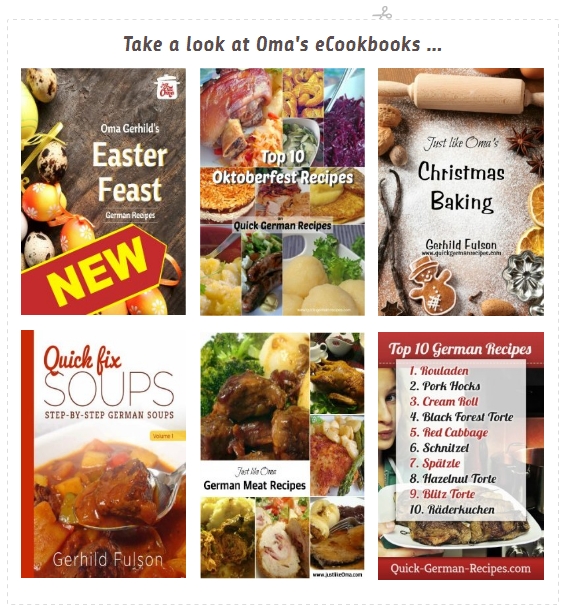
5. How long did it take to start earning income from your online business? Is it a full-time or a part-time income?
I really don’t recall when that first check came in, but it was within the first few months. The income has grown steadily and is fully funding all the expenses of the Gottes Wort ministry (which is totally non-profit).
How long does it take you to get there? That depends on your niche (the more competitive it is, the longer it will take for your pages to rank) and on your time availability (if you work full-time on your business, you’ll get there much faster than if you only have a few hours per week).
6. With the rise of mobile traffic, what steps have you done to give your visitors the best experience on their smartphones and tablets?
I am blessed with a gifted designer in my family. My son, Mike Fulson, who is also a SiteSell Professional, designed both of my sites, making sure they were totally mobile-friendly. With over half of our visitors using mobile, this is extremely important.
Once, there was a problem that only showed up intermittently. I asked my Facebook fans if they would check it out and let me know what they saw. I had hundreds respond, sending screenshots and info. It gave me insight that I couldn’t obtain any other way. The problem was quickly solved. Can you tell I love using Facebook?
When I create a new page, I check it on my smartphone and tablet, just to make sure that all’s good. I also check both sites at random, especially after I make any major updates.
Solo Build It! includes over 100 professionally created site designs, optimized to perform well on all devices: computer, tablet and mobile. Start with a pre-designed template and modify it to your heart’s desire. SBI!’s Site Designer allows you to change any page element with its easy-to-use tools. No coding knowledge needed!
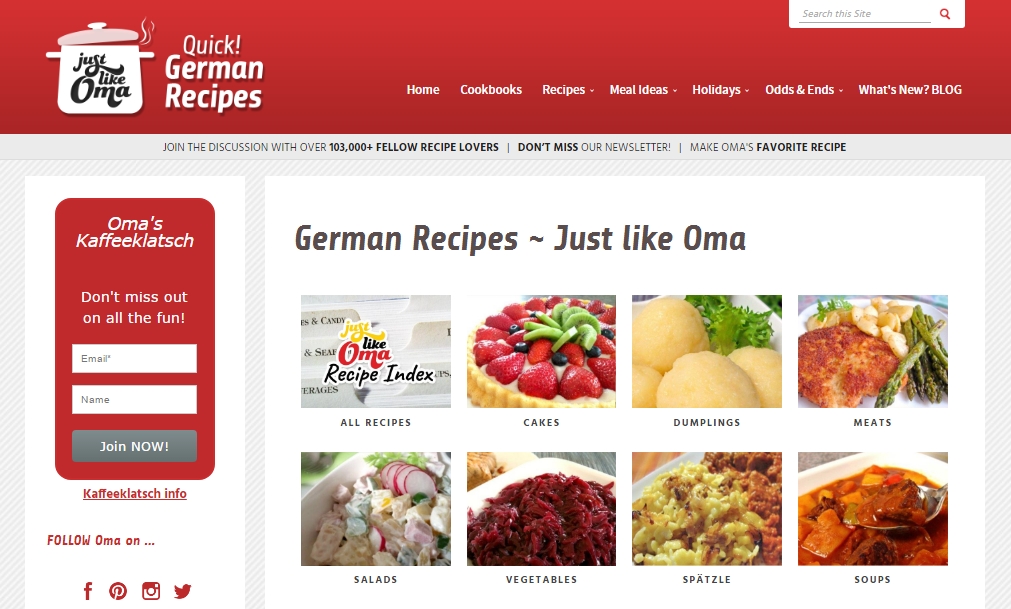
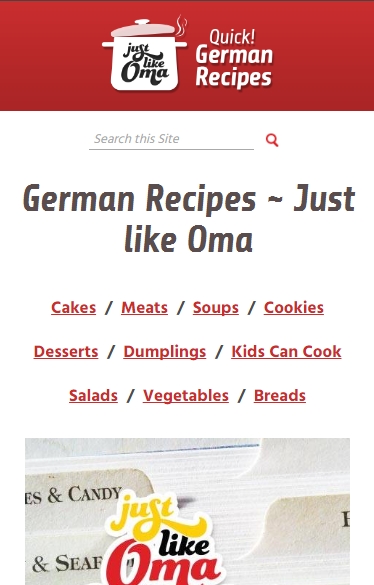
7. You use social media to promote your online business. How did you decide which platform(s) to use? Why do you think they work best for your niche?
Since recipes and inspirational/motivational quotes are very visual, Facebook and Pinterest are the main platforms I use. They both have a learning curve to use properly for business, but the results are so worth it. Facebook really is an inexpensive marketing tool and its ad/audience targeting is a great plus.
Together, these two are responsible for half the traffic to our sites. I’m dabbling with Twitter and Instagram and starting to see some results there, too.
To make posting easier, I use schedulers: Postplanner for Facebook and Twitter and Tailwind for Pinterest.
It’s super important that you stay hands on. You can’t just schedule and leave it alone. Engaging with the fans is so important. It’s establishing that relationship that builds trust. Once that trust is built, many fans become email subscribers, and that’s exactly where we want them.
Building an engaged following on at least one social channel is an important part of Solo Build It!’s concept of PREselling. The more your audience and prospective customers get to “know” you, the more they will do business with you.
Gerhild applies these principles perfectly well on her social channels. She started by focusing on the two channels that suited her audience best: Facebook and Pinterest. She’s using automation tools the way they should be used — to save time by scheduling content in advance, not to put your social marketing activities on auto-pilot.
Here’s an example of how Gerhild interacts with her fans on Facebook:
Click on the image above to see the post live on Facebook. Notice how Gerhild replies to questions and comments in a timely manner? This deepens the relationship with her audience.
8. What has been your biggest challenge so far as a solopreneur?
Our biggest challenge is keeping track of our time. It’s so easy to constantly work at something that you are passionate about and that you are enjoying.
However, once a year, it’s off to Cuba. No Internet access! Just pure relaxation for my husband and me. We come back home refreshed and eager to get back to business.
Going to a place with no Internet access seems like just the right idea!
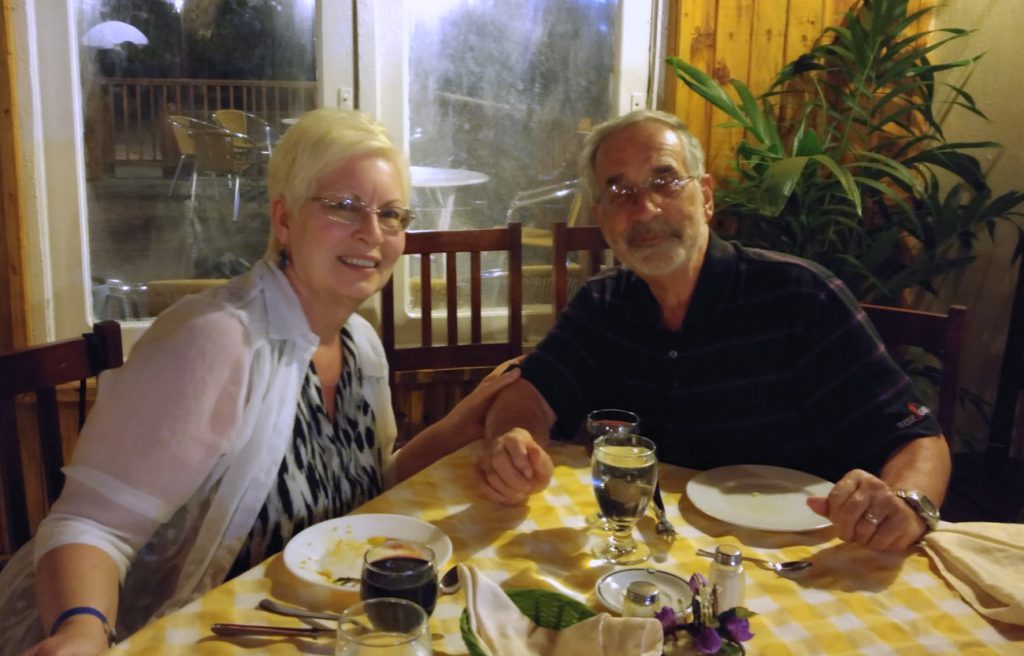
9. What do you enjoy most about being online business owners? How has it changed you, your life, your family?
What started as a Christian resource website for our ministry in Germany has become a global online church. This ministry is where our passion lies. The Facebook page for gotteswort.org, however, has 95% of its over 200,000+ fans as German-speaking Brazilians! This is something we never, ever, considered a possibility.
Just like Oma makes this a reality. The experience I’ve gained from running this as a business, the building up of traffic, and the social media presence, lets us focus on how to implement it on Gottes Wort.
Right now, hubby is busy up in his office, getting ready to video Sunday’s message that will be posted on Facebook, YouTube, and the website, and also reworking early website pages.
I’m using my laptop in the living room, doing some Facebook scheduling, feet up, with a bowl of strawberries and my coffee. I look out the window at the wildlife on our rural property, and I feel like I’m just spending relaxing time. I tell myself I really should go up to my office and get to work. That’s what passion does. It feels good when you’re doing it! It really doesn’t feel like work!
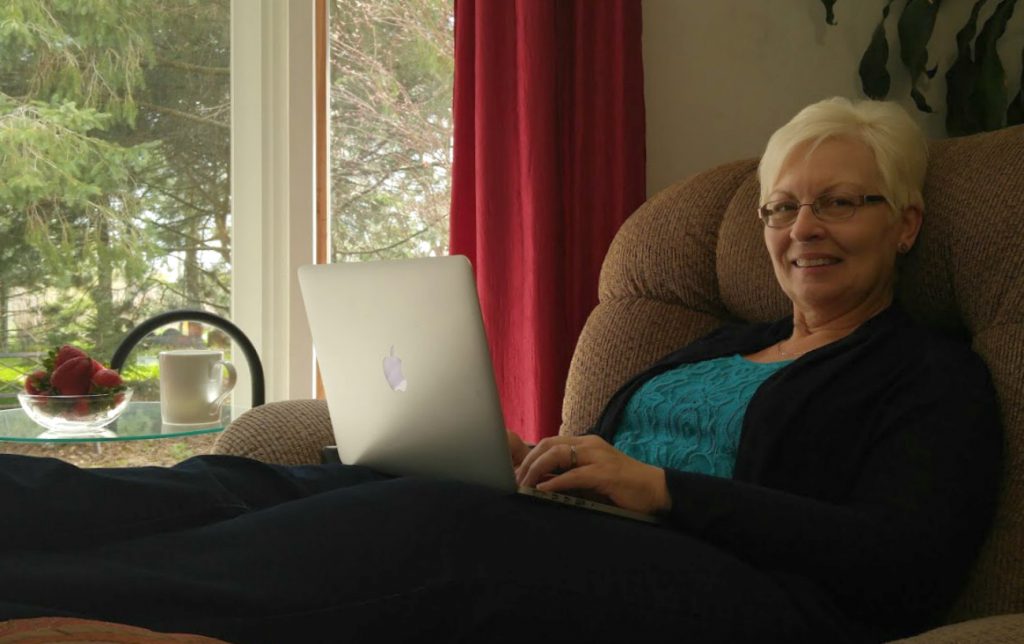
Being online business owners gives both of us the freedom to continue with what we really enjoy doing: teaching, counseling, and helping others.
As long as we have WiFi, we’re good to go. Whenever we travel (which we can do spontaneously) and wherever we go, we’re always stopping to take photos for our graphics (everything on our sites and social media is self-produced) and enjoying the journey.
When you love your work and are passionate about what you’re doing every day, you’ll feel a wonderful sense of satisfaction. You plan, think, strategize, imagine, daydream, solve problems in your head. And you love it. Your passion for your business begins to weave into and become part of your life.
You’re in charge of your life. You define what success means to you, whether it’s earning a few hundred dollars extra per month, replacing a full-time income or funding a global non-profit organization.
You decide when, where and how many hours to work. Your online business accommodates your lifestyle and priorities. That’s what freedom is all about!
10. And finally… What’s your top tip for someone who is just starting a solopreneur career?
That question is easy to answer. Use SBI! and follow the Action Guide.
It will keep you from the mistakes I made.
However, if you do make mistakes, or if you need help, SBI! provides everything you need: Awesome forums. Great support. Live chat.
If you really want it … if you have a passion … go for it … and never give up!
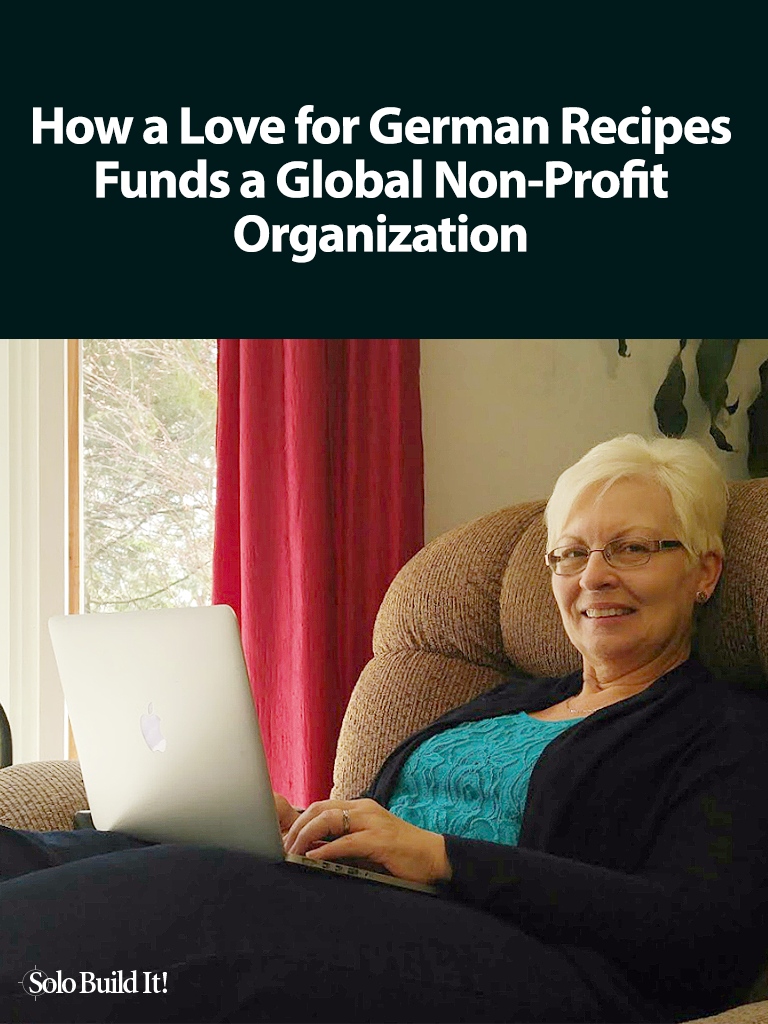
Latest posts by Margit Streifeneder (see all)
- From Zero to 1 Million Fans: A Community-Driven Success Story - October 16, 2025
- Six Figures on Her Terms: A Lifestyle Business Success Story - September 25, 2025
- From Sheds to Sales: A 20-Year Digital Product Success Story - September 11, 2025

